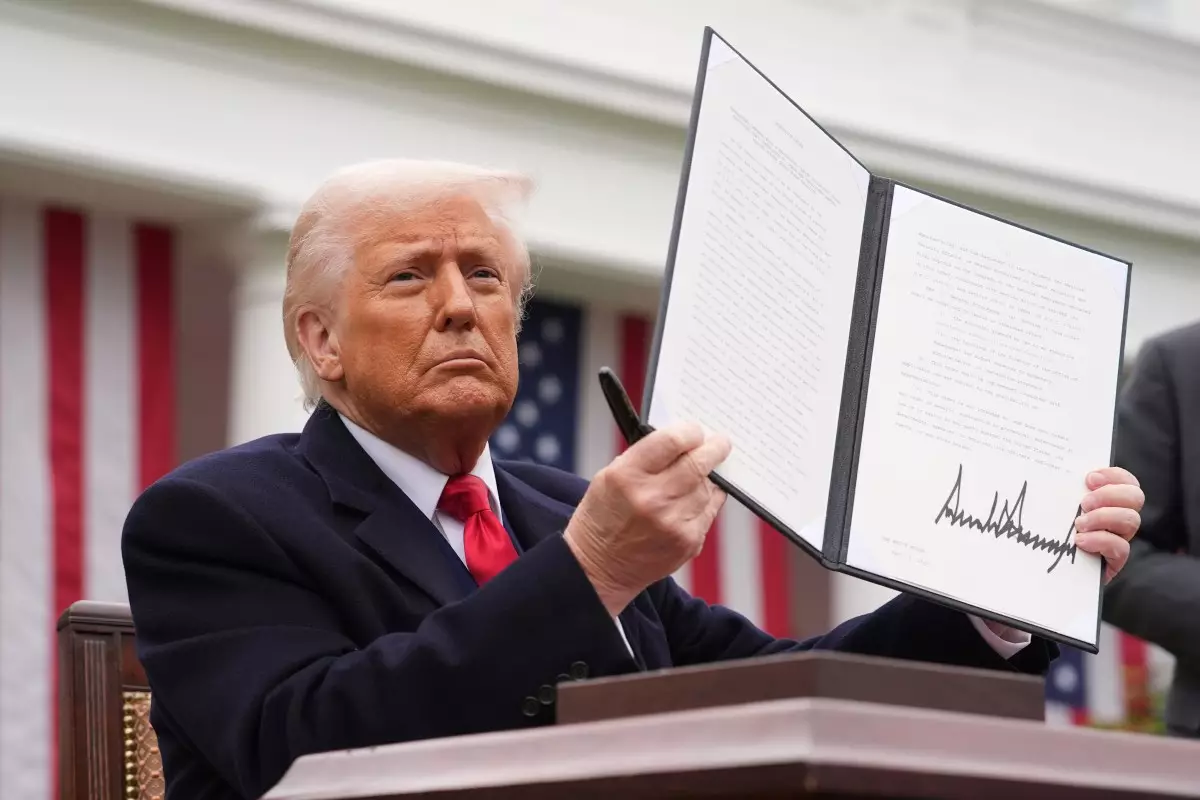The economic landscape during the Trump presidency has been marked by an unorthodox approach to trade policy, particularly concerning the technology sector. While the administration initially rolled out extensive tariffs targeting various imports from China, recent developments signal a pivot tailored specifically to shield the tech industry. The imposition of a universal 10% baseline tariff, alongside steep 125% tariffs on numerous Chinese products, stirred widespread concern. However, the decision to exempt critical tech categories illuminates a strategic maneuver to foster innovation domestically while maintaining consumer affordability.
The Reality of Manufacturing in America
One of Trump’s prominent aspirations is to rejuvenate American manufacturing, thus reducing reliance on foreign production, particularly in the tech sector. The dream of creating an entirely American-made iPhone, however, may remain elusive. Critics argue that the logistics and cost structures that favor overseas production are too entrenched to overhaul swiftly. This tension between nationalistic manufacturing ideals and global economic realities reflects a complicated relationship between ambition and practicality.
The recent announcement by U.S. Customs and Border Protection regarding tariff exemptions for essential tech goods such as smartphones and semiconductors serves two purposes: alleviating immediate pressures on both manufacturers and consumers while facilitating ongoing discussions about reshoring production. This dual approach could potentially allow the administration to claim progress on its manufacturing goals without inconveniencing tech giants directly.
The Reaction from Silicon Valley
The response from the tech community to these developments has been largely positive, with industry leaders like Elon Musk expressing relief over the tariff exclusions. This sentiment indicates an acknowledgment that any increase in consumer prices could stifle demand and hinder growth, particularly for high-tech consumer devices that rely on a global supply chain. The unencumbered access to critical components promises to fuel ongoing innovation while avoiding barriers that could escalate costs for consumers.
Moreover, the productive relationship certain tech executives have cultivated with the Trump administration hints at a more complex negotiation landscape. Many in Silicon Valley see value in engaging with policymakers to protect their interests, as evidenced by substantial financial contributions to the president’s inauguration fund, notwithstanding the inherent risks of aligning with a contentious political figure.
The Shadow of Future Tariffs
Despite the short-term wins for the tech industry, uncertainty looms large over future tariffs. The specter of further investigations, particularly into semiconductor production under national security pretenses, poses a potential threat to the very fabric of the industry’s innovation cycle. As companies like Nvidia and Apple strategize around current exclusions, they must also keep an ear to the ground for any shifts in government rhetoric or policy that could disrupt their supply chains yet again.
In navigating this complex interplay of tariffs and exemptions, the tech industry finds itself at a critical junction. The balance between nurturing American manufacturing and sustaining global engagement epitomizes a dichotomy that defines the current economic landscape. As companies adapt to these changes, their response will not only determine their market standing but also shape the broader contours of the American economy in the tech-driven future.

